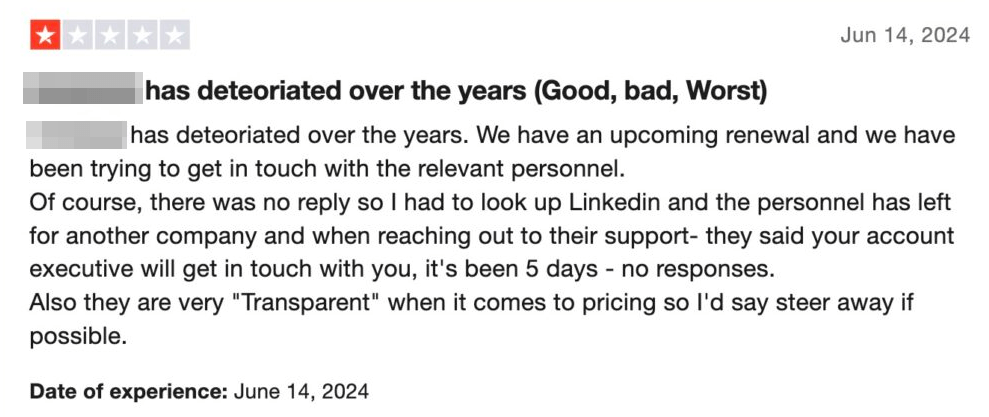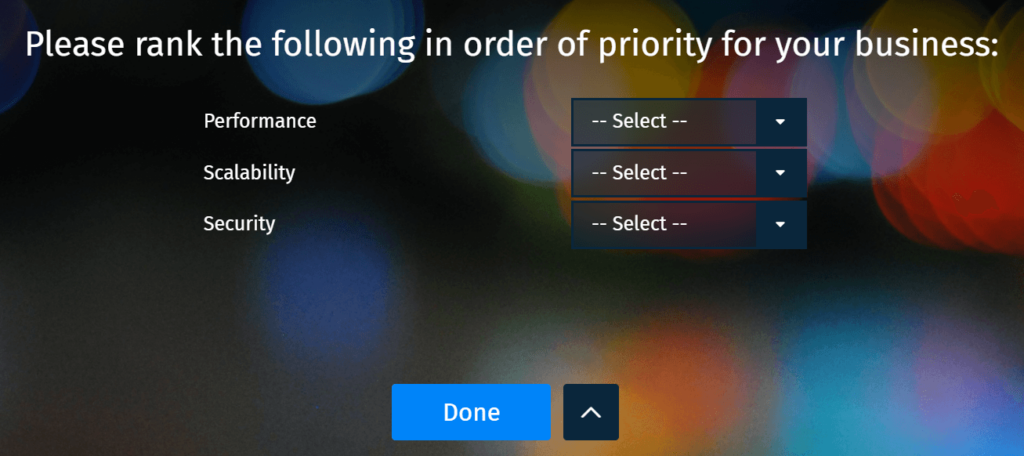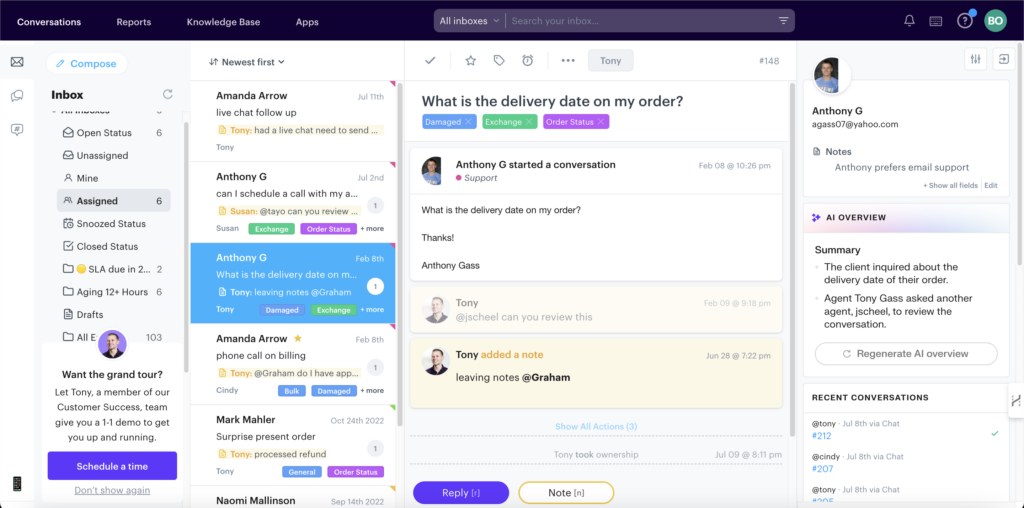Are you a small business owner working hard to bring your best to your customers every day? If so, you know that making sure every product or service is top quality is only the start.
The experience customers have when doing business with you matters just as much – maybe more. That’s where customer service and customer experience come into play. Although these terms are often used interchangeably, understanding the difference is critical to boosting your bottom line and fostering loyalty.
This article explores the relationship and distinctions between customer service vs customer experience. We also show you why mastering both is a game changer for your small business, and offer some practical tips.
Understanding Customer Experience: What Is It?
Customer experience is the big picture. Brittany Hodak puts it well in her book Creating Superfans, when she explains that the modern consumer is living in an “experience economy”. They’re comparing your business to the best experience they’ve received in any category – not just in yours.
To find success in this environment, your customer’s experience has to be more than satisfactory. It needs to be exceptional.
There are two key components of a great customer experience. The first is cultivating a holistic view.
Everyone is part of the picture. That means sales, marketing, finance, product development, and customer service. If you don’t have happy employees, you won’t have happy customers. The quality of each team member’s work helps to shape the experience a customer receives.
It’s also important to think in terms of touchpoints. Each customer’s experience is a series of levels. In the best case scenario, their journey starts with awareness and spans all the way to advocacy. To keep people from falling away mid-journey, you have to stand out at every stage.
Let’s look at an example of quality customer experience in action:
- A potential customer sees your PPC ad on Google, and clicks through to visit your website.
- They’re impressed by what they see, sign up for your email list, and download a white paper.
- A few days later, you send them a personalized email that speaks to their unique needs.
- They click on the link to watch a demo video, and are impressed by how easy your software is to use.
- Finally, they decide to sign up a free trial, and eventually a paid plan to get more robust features.
That’s the power of a well-designed customer experience. Every interaction the customer has with your business is positive and encouraging, which makes all the difference.
Understanding Customer Service: Where Does It Fit In?
Now, let’s talk about customer service.
Customer service is the support you provide to customers before, during, and after a purchase. It’s about making those moments of truth count.
Those interactions where your employees directly engage with customers are critical. That’s because they are representing your brand. It’s those moments that build a company’s reputation – for better or for worse.
Quality customer support starts with responsiveness. People are accustomed to instant feedback, and any delay can be a trigger point.

Most customers aren’t expecting perfection. But they are expecting you to act like you care, and that means responding promptly to their needs.
Just as important are your team’s problem-solving abilities. Customers don’t want excuses; they want solutions. So you have to equip your customer service team with the knowledge they need to be effective.
The next key principle of customer service is courtesy. Treat every customer like they’re the most important person in the world – because to your business, they are. As William James once said: “The deepest principle in human nature is the craving to be appreciated.”
Here’s an example of customer service in action:
- A customer is struggling to install your email plugin on their website, and they report the issue.
- A customer service representative emails back quickly to acknowledge the problem.
- They sincerely apologize, and then send a step-by-step video tutorial that’s personalized for the customer’s exact needs.
- The next day, they follow up to make sure the video solved the problem.
This is the kind of customer service that results in positive ratings and more business.
3 Key Differences Between Customer Service vs Customer Experience
With those basics out of the way, here’s a closer look at how to differentiate customer service vs customer experience.
#1: Scope
Customer service is a reactive subset of the overall customer experience.
There’s a story about Doug Dietz, the industrial engineer who spent over two years designing a new MRI machine for GE Healthcare.
He was proud of the technology, until he saw the way the room looked through the eyes of a terrified little girl. Doug realized that the patient experience he had designed was completely missing the human element, and empathy for young patients in particular.
Similarly, customer experience goes beyond customer service encounters where someone’s directly asking for help. Customer service is largely reactive, while a quality customer experience requires proactively shaping those touchpoints we mentioned earlier.
#2: Focus
Customer service typically focuses on a single transaction. This could be helping a buyer troubleshoot an issue, or answering a question about how to use a product. While context still matters, it’s largely about what’s happening right now.
Customer experience, on the other hand, casts a much wider net. It takes a long-term view of each relationship. A buyer who never once reaches out for help or to lodge a complaint still interacts with most of your business’ customer experience touchpoints.
#3: Metrics
One of the distinctions between customer service vs customer experience are that they’re measured differently. The key customer service metrics for a small business might include:
- Response Time. The amount of time it takes to respond to your customers via email or chat. This can also measure how long it takes a customer to get through to a service representative on the phone.
- Resolution Rate. Are you closing out customer inquiries with a single interaction, or does it take a few days to resolve their issues?
- Customer Satisfaction Score (CSAT). How satisfied are your customers with specific service interactions?
On the other hand, the broader scope of customer experience also covers metrics like:
- Net Promoter Score (NPS). How likely are customers to recommend your business to a friend?
- Customer Effort Score (CES). How easy is it for customers to find information, get help, or make a purchase?
- Customer Lifetime Value (CLV). The amount of money the average customer will spend with your company over their lifetime.
Optimizing Customer Service and Customer Experience: 3 Practical Strategies for Small Businesses
Mastering both customer service and the broader customer experience can seem overwhelming, especially if resources and personnel are tight. So here are a few practical strategies to get you started.
1. Assess and Improve the Overall Customer Experience First
No matter how long your business has been operating, this is a good moment to take a step back and evaluate the entire customer journey. Identify pain points, areas of friction, and opportunities for improvement from initial awareness to post-purchase support.
Your team likely has some valuable input on these elements. However, it’s also important to go straight to the source. You can gather customer feedback through surveys, interviews, and social media monitoring, in order to gain insights into their needs and preferences.

The more time you spend evaluating the current customer experience and planning out how you want it to flow, the better positioned you’ll be. Once you have an overall plan in place, you can zero in on each aspect one at a time, including optimizing customer support.
2. Allocate Your Resources Strategically
It’s vital to invest in the customer experience. At the same time, this has to be balanced against your business’ other needs.
With that in mind, here’s how to ensure that you’re allocating your resources in the most impactful ways:
- Invest in training. Ensure that your team is well-trained to deliver exceptional customer service. They’ll need to be strong in both product knowledge and soft skills like communication and problem-solving.
- Focus on high-impact areas. Identify the aspects of customer service and experience that have the most significant impact on satisfaction. Then focus your resources there. This could mean faster response times, personalized service, or exclusive member benefits – whatever makes a practical difference for your specific audience and niche.
- Gather feedback continuously. Regularly collect and analyze customer feedback to identify areas for improvement. You need to understand customer pain points in order to create offers that directly address their needs.
- Leverage tracking technology. You can implement systems to track customer interactions and feedback. This helps to identify what your current customer experience is like, and how it can be improved through better customer service and more effective touchpoints.
That last point is especially important, so let’s delve into it a bit further.
3. Provide Your Team with the Right Technology and Tools
You don’t have to do everything by hand. The right tools save a lot of time and money, and are crucial in building a consistent, effective buyer’s journey.
CRM systems, chatbots, and self-service portals can all be used to enhance your customer service and experience. They let you provide quick and easy support, personalize interactions, and gather valuable customer data – and they don’t have to be expensive.
For example, Groove is our simple yet powerful help desk solution built specifically for small businesses:

If you’ve been using a traditional email platform like Gmail or Outlook to manage your customer support inquiries, you’ve probably noticed that things can get messy fast. And as your business scales, the situation only gets worse.
Groove helps to streamline communications, and makes sure your team doesn’t miss any inquiries. You can:
- Assign emails to specific team members
- Tag emails with labels that make it easy to organize and prioritize
- Track the status of all emails to make sure everyone is getting a timely response
- Gain a “bird’s eye view” of all support conversations from a single inbox
- Create custom folder views to help prioritize requests
- Easily integrate your customer support with other business tools like Shopify or Mailchimp
In other words, with Groove you can provide top-quality customer service at all times, with less effort and fewer mistakes. With this key aspect accounted for, you can then turn your attention to perfecting the rest of the customer experience.
Leveling Up Your Customer Service and Customer Experience Game
When you’re hands-on with every aspect of your company, you don’t have time to waste on busywork. But so many small businesses end up throwing their time, energy, and money at every customer service issue that comes up. This can be exhausting and ultimately counterproductive.
Providing an effortless, memorable experience for your customers reduces the number of issues you have to tackle. This frees up more of your precious time for those high-impact activities that really matter to growing your business.
Ready to escape the customer service grind? Our user-friendly helpdesk has assisted over 100,000 business owners in boosting their customer satisfaction rates. See how Groove can help you too!





